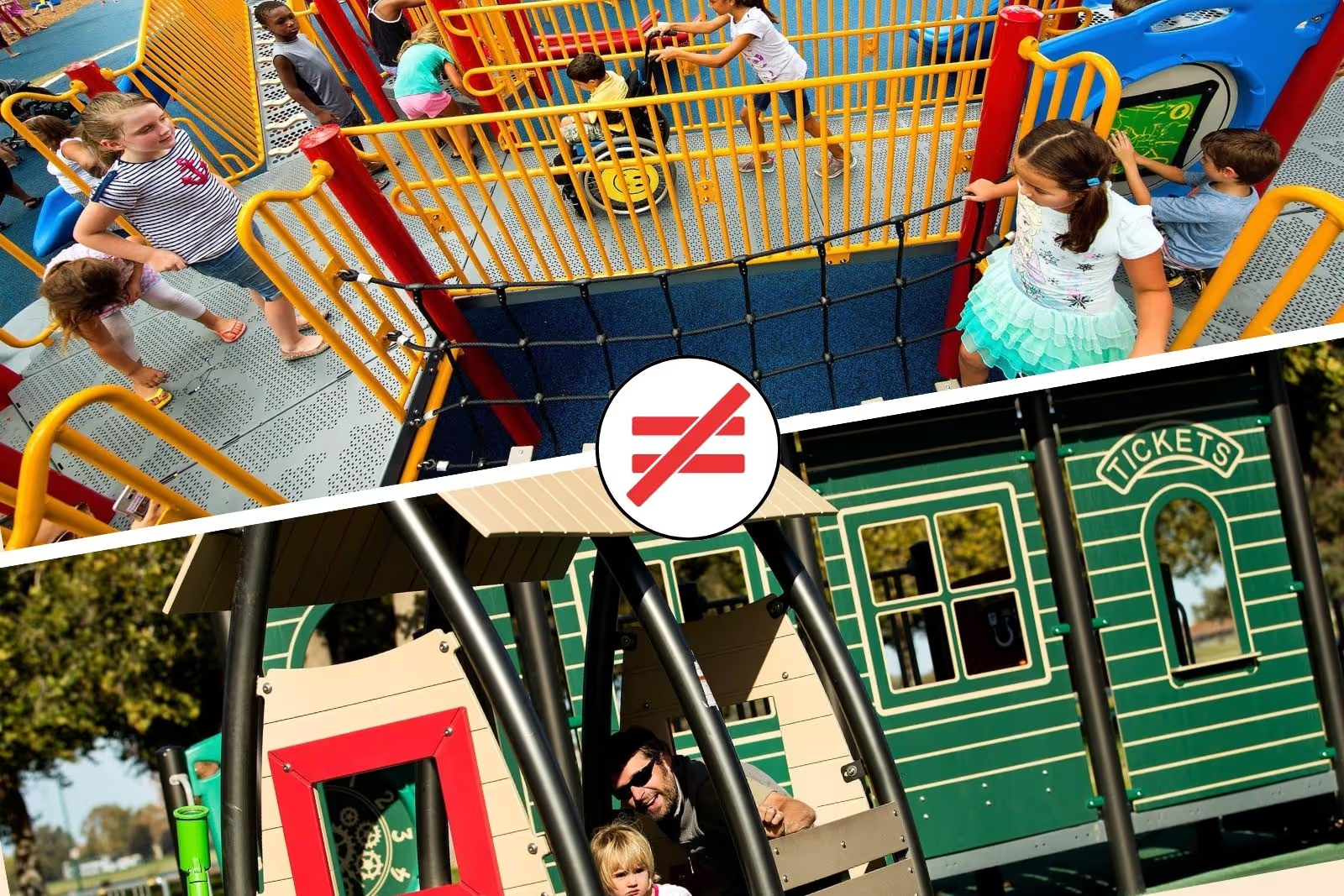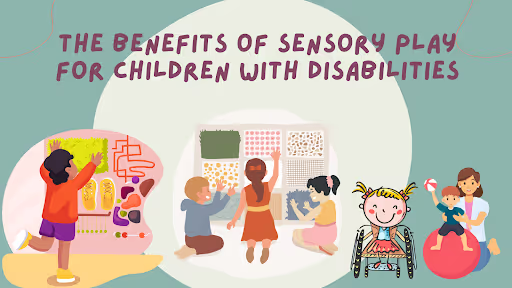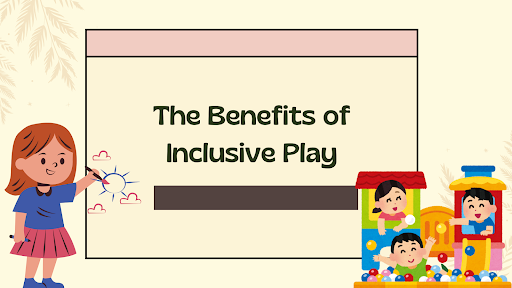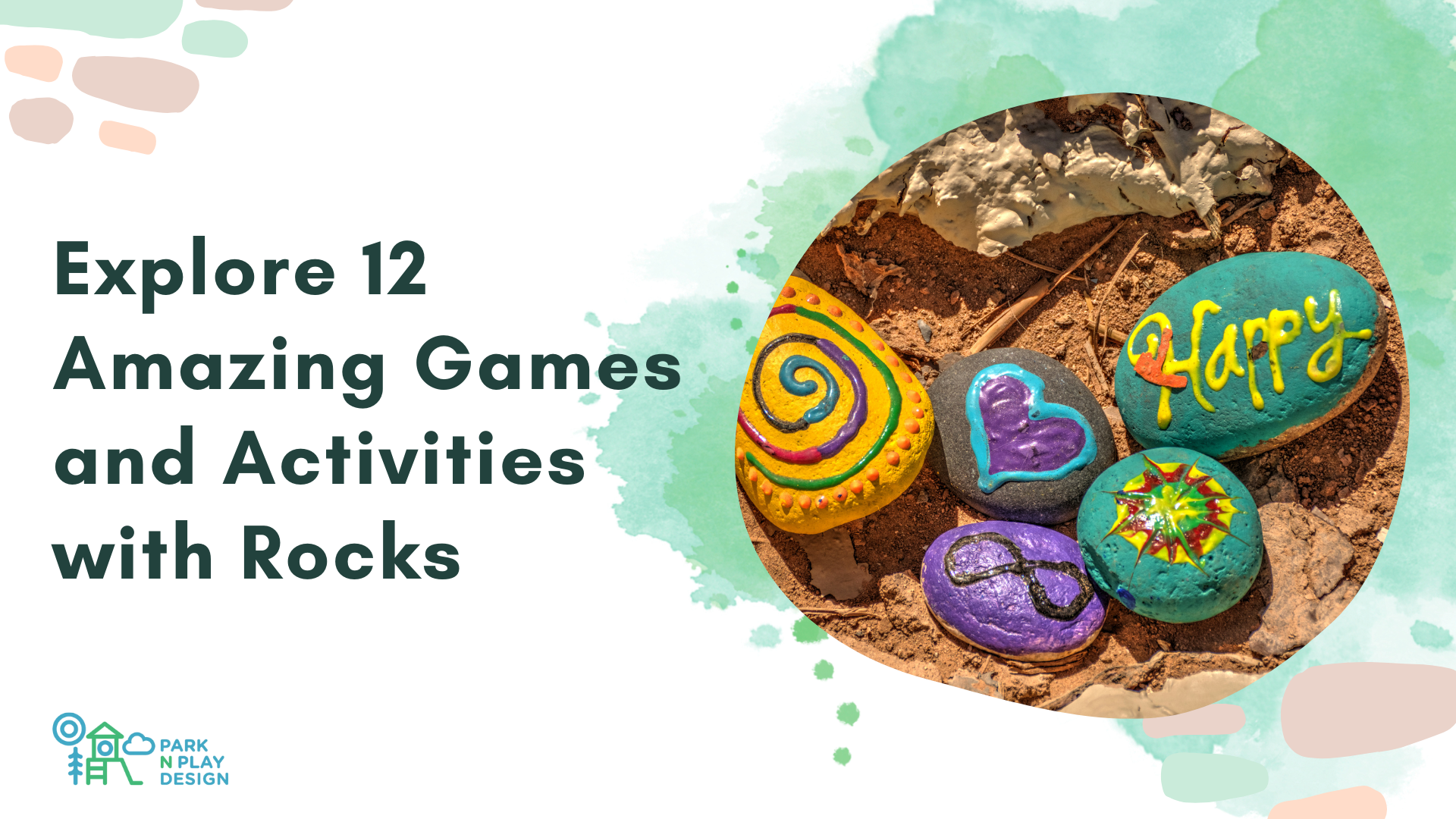21 Fun Playground Games for Kids
Playgrounds offer fun and exercise for kids and parents. Discover 21 of the best playground games to keep kids active and entertained.

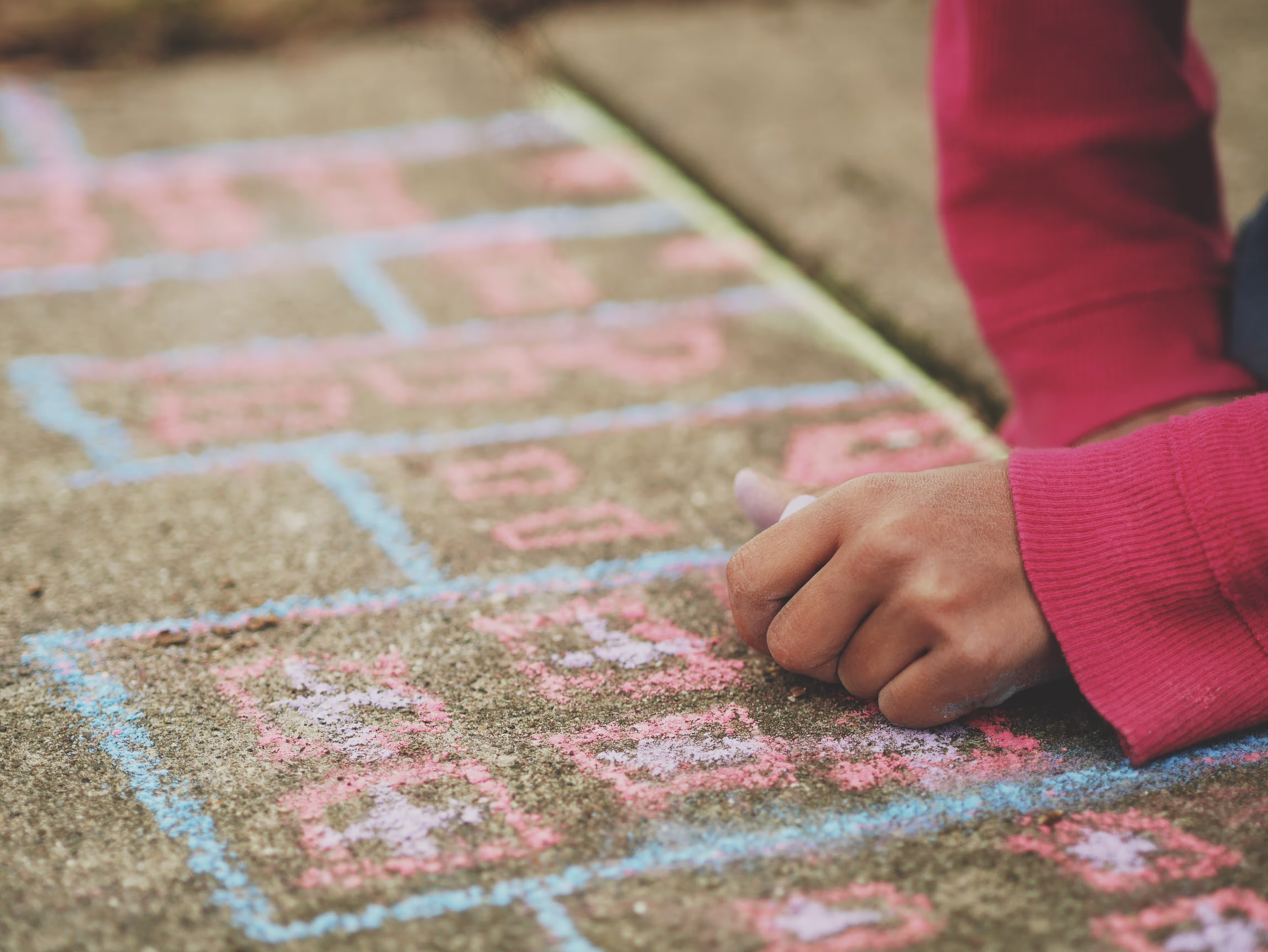
Have you been to a playground lately? It's an excellent place for parents and kids to get some exercise and have fun.
But with so many things to do, it can be hard to know which games are the most fun. That is why we've put up a list of the best 21 playground games for kids.
From classic games like Tag to new favourites like Freeze Tag, there's something for everyone here. Take a look and get ready to have a good time!
Importance of Playground Games for Kids
Playgrounds are important for fostering both physical and emotional development in children. Playground activities are an excellent method for youngsters to get exercise while having fun.
These games help younger kids learn teamwork and cooperation skills while also providing a great way to make new friends. Kids who play together on the playground often develop lifelong friendships.
Beyond benefiting physical health, playground games also contribute to mental and emotional well-being, teaching kids how to handle both winning and losing, as well as manage positive and negative emotions. It's essential for children to have the freedom to explore their creativity and imagination without constant adult intervention.
Playgrounds are important because they offer a space for free play that supports holistic growth. So next time you're at the playground, encourage your kids to play some games!
Fun Playground Games for Kids
The 21 best playground games for kids are categorized for easy reference.
- Classic playground games: These are the playground staples we all remember from childhood. Games like tag, hide and seek, and Simon Says are perfect for kids of all ages.
- Team games: Games like relay races and capture the flag are great for getting kids to work together as a team.
- Games for large groups: If you're at the playground with a large group of kids, try playing games like musical chairs or the "duck, duck, goose" game.
- Games for small groups: If you're looking for something to do with a smaller group of kids, try playing games like hopscotch or four square.
Parachute
This is a classic playground game that children can play with any number of players. The game's object is to keep the parachute in the air for as long as possible.
Players Needed:
- At least 8
What You'll Need:
- A parachute (you can usually find these at school playgrounds, or you can purchase one online)
How to Play:
When the game begins, have the kids hold onto the edge of the parachute. Then, have them wave the parachute up and down to get it in the air. Once it's in the air, they can start passing balls or beanbags under it.
If you want to make it more challenging, you can have them try to keep the parachute from touching the ground. The game is over when the parachute touches the ground.
Capture the Flag
Capture the flag is a beautiful game for large groups. It's a lot of fun and a fantastic way to get everyone involved.
Players Needed:
- At least 12, divided into two teams.
What You'll Need:
- Two flags (you can use anything for this, from handkerchiefs to shirts to balls)
How to Play:
The game begins with each group having its own team flag or marker, and the goal is to capture the other team's flag and return it to your team's territory. If an opponent is tagged, they are sent to jail. Jailbreaks are allowed, but teammates must tag the jailed members to release them.
Hopscotch
This playground game is a classic for a reason. It's easy for children to learn and can be played by people of all ages.

Players Needed:
- One or more
What You'll Need:
- a playground or other ample open space
- chalk
How to play:
Use sidewalk chalk to make an interactive hopscotch grid. Number squares 1-9 and pick some rocks you can throw in your hand, including small ones for bouncing balls or large stones that will be hard thrown when landing on the ground after being launched high into the air by throwing them straight forward while balancing oneself only once before picking up more debris near their feet, so they don't miss out on any potential opportunities during playtime!
The person who enters square #1 starts off by stepping onto one foot and then transferring all weight onto balled fists before planting them again at either end on opposite sides
Jump-Rope and Double Dutch
Jump-rope and Double Dutch are classic playground games that are great for getting kids moving. They're also great for developing coordination and teamwork skills.

Players Needed:
- at least two
What You'll Need:
- a jump rope or a set of double dutch ropes
How to play:
- Jump rope
How to play:
One person turns the rope while the other person or people jump. If you're playing Double Dutch, two people turn the ropes while two or more people jump.
This game is excellent for coordination and fitness. It's also a lot of fun!
Look up, Look down
This is an excellent game for kids who are just learning to read. It's also a good way to teach them about directions.
Look up, Look down is a perfect game for large groups. It's easy to learn and can be played in a relatively short amount of time.
The number of players:
- Four or more
What You'll Need:
- an open space or any playground
How to play:
To start, have the players form a circle and position themselves about two feet away from each other. Once everyone is in place, the moderator (usually the instructor) will shout, "Look up!" All of the players must immediately glance up and look into another person's eyes in the circle.
Then the person who was looked at will lock eyes with the person who looked at them and leave the room. The remaining players will continue staring until the teacher says, "Look down."
The next round will be held until the final two players have been defeated to clinch the victory.
Kick the Can
This playground game is perfect for hot summer days. All you need is a can and some friends. It's best played with kids ages six and up. The object of the game is to avoid being caught by the person who is "it."
The number of players:
- At least 4
What You'll Need:
- An empty can
- plastic bottle
How to play:
One player is chosen to be "it." The player who is "it" kicks the can or bottle and then runs away. The other players try to catch the player who is "it." If they are caught, they become "it." If no one is detected, the player who is "it" gets to go again.
The game is over when everyone gets tired or bored.
Body Spellers
The best way to learn how spelling works is by playing a game with your kids! This fun and easy-to-prepare activity will help them understand that cooperation can be helpful in achieving common goals.
The number of players:
- At least 2
How to play:
The game is really straightforward and easy. Split your own team in three so that each person has the same number of people on their side as well- this will make it easier for everyone!
Then give them instructions to spell words with their fingers or hands (whatever works best) before giving other teams one word, which should be less than four characters long; these shorter phrases add another minute to how much time you've already got left at first glance.
The goal is to get the most points by the end of the game. This game can be enjoyed by people of all ages. It is perfect for a family game night or for when you have guests over.
Snake in the Gutter
Snake in the gutter is a great game that teaches agility and problem-solving. This challenging game requires quick thinking and problem-solving skills in order to succeed.
As such, it is an excellent way to improve hand-eye coordination and reflexes.
The number of players:
- Six or more
How to play:
Have at least three children form a line with wide spaces between them. The adult (or child) yelling "Snake In The Gutter!" means that there's one snake per player-and they must avoid getting tagged by any other players as well so they can stay alive till the end of the round.
It gets increasingly difficult after each person has been caught once. Still, if someone does get captured twice, then their accomplices become eligible, too--which makes this fun group activity even more challenging!!
Four Squares
Four square is a prevalent ball game that has been played on playgrounds for many years. It is thought to date back to the early 1900s, and it is mentioned in children's books from that time period.
The game is relatively simple to play, and it can be adapted to different skill levels. Because of its fast pace, four square is a great game to play during a break from school or work. Anyone can join in and have a good time.
A number of players:
- Four players
- chalk
What you'll need:
- A playground with a four-square court or any open space that can be divided into four equal squares.
How it's played:
This ball game plays on an area of square courts further divided into four small squares with numbers 1 – 4. A person stands at the top of a square; the highest player in the top three, the lowest in fifth place.
The person in square one hits the ball to another player in another court. If the receiver fails to hit it back, then they are out and go to the bottom of the line.
The game continues until only one player is left.
Simon Says
This playground game is perfect for young children who are just learning to follow instructions. In the Simon Says game, children are encouraged to improve their body awareness through practicing imitating demonstrated movements or sustained positions.
Children with poor proprioception may struggle in this area and benefit from practicing what they see on screen before trying it themselves.
The number of players:
- three or more players
How it's played:
The play begins by designating one person as Simon, while the others are the players. Standing in front of the group, Simon tells the players what they must do. However, the players can only obey commands that begin with the words "Simon Says."
For example, if Simon says, "Simon Says touch your nose," then the players must touch their noses. But if Simon simply says "jump," without first saying "Simon Says," then the players must not jump. Those that do jump are out.
The objective is to follow directions and stay in the game for as long as possible! The last person standing wins and becomes the next Simon. If you're Simon, the object is to try to dupe the players into following your commands when they shouldn't.
This is a great game for parties or family gatherings, and it's sure to provide hours of fun!
Hide and seek
One of the classic outdoor games has been around for centuries. Hide and seek remains a favorite for the simple reasons that it requires few players, uses neither tools nor props, and facilitates physical activity while piquing the innate hunter curiosity engrained in children as they explore their world and learn survival skills through both communicating, hiding, and finding exactly what they are looking for.

The number of players:
- at least two, but more is better
How to play:
The person chosen to be "it" closes their eyes and counts aloud to 50 while the other players scatter and find good hiding spots. Once "it" has finished counting, they try to locate all of the other players. If "it" finds someone, then that player is out for the round.
The last remaining player becomes the new individual tasked with being "it."
Catch the Dragon's Tail
The game Catch the Dragon's Tail, also called "Tail of the Dragon," is a physical coordination and strategy game that originated in China. The game requires both physical coordination and strategic thinking, making it an excellent activity for children. In addition to being fun, the game can help children develop essential life skills.
The number of players:
What you'll need: A Handkerchief and an open playground
How to play:
Catch the dragon's tail is an enjoyable game for kids of all ages. To play, have all of the children form a straight line with their hands on the shoulders of the child in front.
The first in line is the dragon's head, and the last in line is the dragon's tail. The object of the game is for the dragon's head to catch the tail by moving the line around so they can tag the last player.
But all of the players in the middle should do their best to stop the dragon's head without breaking the line! When the head catches the tail, the tail player goes to the front, becoming the new dragon's head.
All other players move back one position. This game is sure to be a hit at your next party or get-together!
Basketball
Basketball is an excellent game for kids of all ages. Not only is it a lot of fun, but it also provides an excellent way to stay active and get some exercise.
Playing basketball can help children build strength and endurance while also improving coordination and motor skills. In addition, basketball is a social game that can help kids make new friends and develop teamwork skills.
Whether you're shooting hoops at the park or playing a game of 21 with your buddies, basketball is sure to provide hours of fun. So get out there and start shooting some hoops!

The number of players:
- Ten or more
How to play:
- Basketball court
- Ball
Here are a few tips to help them get started.
- First, it's important to choose the right size ball. A ball that is too big will be difficult to handle, while a ball that is too small will be easy to lose.
- Second, make sure the hoop is at the right height. A hoop that is too low will be hard to shoot at, while a ring that is too high will discourage kids from trying.
- Third, teach kids the basic rules of the game. They should know how to dribble, pass, and shoot before they start playing.
By following these tips, children will be on their way to playing basketball like a pro in no time!
Red Light, Green Light
Red light, green light is a classic children's game that can be played both indoors and outdoors. The object of the game is to listen carefully to the person who is acting as the traffic light and then to race to the finish line without getting caught.
This simple game can help children to improve their listening skills and their agility. In addition, it is a lot of fun for young children. When playing outdoors, Red lights and green lights can also help children to learn about road safety.
By teaching them to listen carefully and to obey the traffic signals, we can help keep them safe when they are out and about.
The number of players:
- Any Group Size
What you'll need
- An Open Playground
How to play:
To start the game, everyone lines up at the starting line. When you say "Green Light," everyone will start moving towards the finish line. However, if you say "Red Light" at any point, everyone must stop immediately.
If any players are still moving when you call "Red Light," they must go back to the starting line. The game is over when everyone makes it across the finish line or when most players make it across the finish line. This activity is a fun and simple game that can be enjoyed by people of all ages.
Sports Hot Potatoes
One simple but fun game that can help develop a child's hand-eye coordination is called "hot potatoes." The game can be played with two or more children, and all you need is a ball. This game is not only fun, but it also helps children to improve their hand-eye coordination. And as an added bonus, it can also help them to develop their motor skills.
The number of players:
- No limits.
What you'll need:
- Push desks
- chairs
How to play:
To start, one child throws the ball to another player, who then tries to throw it back as quickly as possible. The players continue passing the ball back and forth, and the goal is not to be holding the ball when the music stops. If a player is holding the ball when the music stops, they are out, and the game continues until there is only one player left.
Jacks
Jacks is a classic game that can be enjoyed by people of all ages. The game is about collecting jacks in one turn, which can be done through different techniques.
Not only is the game of jacks enjoyable, but it also serves as a mental workout! Through playing this fast-paced game, kids will unknowingly be practicing physics and math - two crucial skills for furthering success in school and beyond.
The number of players:
- Four or more
How to play:
In order to start the game, one player is chosen to go first. Then, jacks are scattered in a small area. The first person begins by tossing a ball in the air and quickly grabbing one jack before the ball has a chance to bounce. With the same hand, they grab hold of the ball after it bounces just once.
If the player is successful, they swiftly move the jack to their other hand and progress to the next round. The first person loses their turn if they fail to pick up the required number of jacks for their match, don't grab the ball before it bounces a second time, or commit a foul. Each player will take turns until one player wins by successfully completing Round 10.
Clapping Games
Hand Clap games for kids are not only fun, but they also help to improve a child's coordination and memory. And best of all, they can be played just about anywhere.
The number of players:
- Two or more
How to play:
To get started, have the kids stand in pairs facing each other. Then, start clapping your hands together in time with a simple rhyme or song. As the kids get the hang of it, you can add in more complex rhythms by clapping hands up, down, or to the side. With a little practice, the kids will be able to keep up with even the most complicated clapping patterns. Not only is this a fun activity for everyone involved, but it's also a great way to help kids develop their sense of rhythm and coordination.
The Hula Hoop Game
It's no secret that getting kids to be active can be a challenge. But it's essential for their physical and mental health. That's why this game is such a great way to get kids moving. All you need is a hula hoop and some music. It's a great way to get them up and active, and it also helps them to improve their coordination. Plus, it's just a lot of fun. So turn on some music, get the hula hoop out, and let the kids have a blast. They'll be getting some exercise without even realizing it.

The number of players:
- No limit
What you'll need:
- A hula hoop for each player
How to play:
In order to play, all you need is a hula hoop and some willing participants. The best way to play is to have everyone stand in a circle and then choose one person to start. That person will then slide their hula hoop onto someone else's hand. Once everyone has a hula hoop in their hand, the goal is to then move the hoops around the circle without using your hands. This may seem like a simple task, but it can be pretty challenging. In order to make it more difficult, you can try moving the hoops in different directions or even changing hands. Hula hoop games for kids are a great way to get everyone moving and having fun.
Duck, Duck, Goose!
Duck, Duck, Goose is a classic children's game that helps kids to develop a variety of important skills. The game requires players to pay attention and to think quickly on their feet, as they must decide who to select as the chaser each round. The act of chasing also helps to promote physical activity and coordination. In addition, the social interaction involved in playing Duck, Duck, and Goose can help children to develop communication and teamwork skills.
The number of players:
- At least three, but more is better
What you'll need:
- Nothing
How to play:
To start, one child is chosen to be the "goose." The goose then walks around the circle of players tapping each player on the head while saying "duck."
When the goose taps a player and says "goose," that player then becomes the goose and must chase the first goose around the circle. The goal is to catch the goose before they are able to make it all the way around the circle and back to the spot where they started.
If the player who is currently goose is caught, then they become It again and continue tapping players on the head.
The game can be played with any number of players and is a great way to get everyone up and to move.
Tag
Most children have knowns how to play tag at some point in their lives. At the same time, it may seem like a simple game, but playing tag has many benefits.
For one, it helps to develop a variety of physical skills, including movement, agility, balance, coordination, and spatial awareness. These abilities can be acquired through play, as kids learn to move their bodies differently.
Additionally, tag can be played during unstructured time and pretty much anywhere - kids don't need any playground equipment like racquets, nets, sticks, or even chalk to draw lines.
As such, playing tag is a great way for kids to stay active and have fun at the same time.
The number of players:
- At least four players
What you'll need:
- Nothing
How to play:
The game of tag is played by two or more people. One person is chosen to be "It," and the other players must then try to avoid being tagged by "It."
If a player is tagged, they then become "It." The game will end when one player has been "It" for a predetermined amount of time or when all players have had a turn being "It."
There are many different variations of tag, so feel free to get creative. For example, you could add rules that prohibit players from going on the grass or require players to freeze if they are tagged.
Freeze Tag
If you've ever played Freeze Tag, you know how fast-paced and fun it can be. For those who haven't played, the basic premise is that one player is "it" and tries to tag as many other players as possible.
When a player is tagged, they must freeze in place until a teammate tags them to release them. The object of the game for the player who is "it" is to freeze all other players. While Freeze Tag may seem like just a simple game, it offers various benefits for kids.
For example, it helps them develop physical skills like coordination, gross motor skills, and balance. In addition, Freeze Tag teaches emotional resiliency, problem-solving skills, and social skills.
So the next time you're looking for a fun game to play with your kids, consider giving Freeze Tag a try!
The number of players:
- At least four, but more is better
What you'll need:
- an open field
How to play:
To play Freeze tag, One player is chosen to be "It," and the other players must then try to avoid being tagged by "It." If a player is tagged, they then become "frozen" and must stand in place until a teammate tags them to release them.
The object of the game for the player who is "It" is to freeze all other players. The game can be played with any number of players and is a great way to get everyone to move.
Final Thoughts
We hope you enjoyed our list of camping games for kids! As you can see, plenty of options are available to keep your little ones entertained - and healthy - while enjoying the great outdoors.
So what are you waiting for? Get packing and get playing! Your children will thank you for it.
Looking to create an outdoor space where families can play and connect? At Park N Play Design, we specialize in designing play areas that inspire adventure and fun. Visit us today to explore how we can bring your vision to life!


